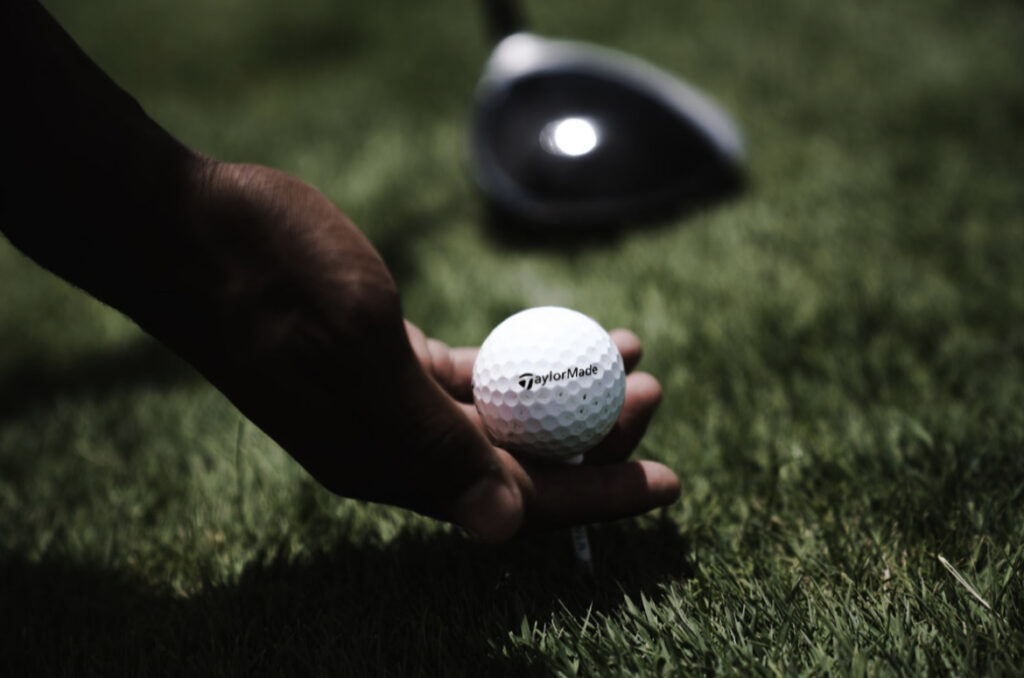Match Play vs Stroke Play

Live dealer casino action captures the thrill of golf’s match play, where it’s not just about the score but besting your opponent hole by hole. Here, in a setting as competitive as any ladbrokes sister site, each shot is critical, and every hole is a chance to outwit your adversary. The objective is simple: be “one up” by winning a hole or avoid falling “one down” by losing one. Success in match play means leading by a margin equal to the remaining holes, reaching the “dormie” stage, or being tied, which is termed “halving the hole.”
Contrastingly, stroke play is a test of consistency over an entire round, each stroke counting towards a total score, with the lowest score winning. It’s about precision and long-term strategy, with each hole’s difficulty influencing the overall score. Golfers often enjoy both match play’s direct confrontations and stroke play’s enduring challenge. Tournaments may alternate between the two, offering a dynamic contest that tests all facets of a player’s game.
Understanding the Basics of Match Play and Stroke Play
Here are some crucial concepts to help you grasp the fundamentals of match play and stroke play:
- Match play focuses on winning individual holes rather than overall score. You can concede shots to your opponent if they have no chance of winning a particular hole.
- Stroke play involves tallying up all your strokes throughout the round to determine your final score. Every shot counts in stroke play, so consistency is key.
- In both formats, it’s important to stay focused and mentally strong.
Definition of Match Play
Match play is a golf format in which two players or two teams compete on a hole-by-hole basis. The goal is straightforward: win more holes than your opponent. You don’t have to worry about your overall score for the round in match play; all that matters is winning each individual hole.
In match play, golf holes can be conceded. If you hit 3 balls in the water off the tee, you can concede the hole, and your competitor is the automatic winner of that hole.
Definition of Stroke Play
Unlike match play, which treats each hole as a distinct event, stroke play entails totaling your strokes throughout the course of the round. The goal is to achieve the lowest possible score, therefore every shot counts.
To avoid mistakes and enhance your chances of success in stroke play, you’ll need to strategize and make sound judgments on each hole. Here’s a contrast of match play and stroke play to help you understand:
| Match Play | Stroke Play |
| Hole-by-hole competition | Cumulative scoring |
| Win or lose individual holes | Count total strokes |
| Opponent-focused | Self-focused |
In stroke play, it’s all about making a name for yourself in the golf world by demonstrating your abilities and improving your overall performance during the round.

Key Differences Between Match Play and Stroke Play
Match play is a format in which you compete hole by hole against one opponent. The objective is to win as many holes as possible in order to win the match. In match play, beating your opponent is more important than your overall score.
Stroke play, on the other hand, focuses on your total number of strokes for the entire round. It makes no difference whether you win or lose individual holes; what matters is that you complete each hole in as few strokes as possible.
Both formats have their advantages, but if you want to belong and enjoy the thrill of head-to-head competition, match play may be more tempting.
Whether you prefer match play for the simple reason of the competition it offers or regular stroke play for its consistency and adherence to the rules of golf, the choice is yours. Some golf tournaments incorporate either match play or stroke into their formats, allowing you to experience both styles of play.
Scoring System
The scoring system in golf adds a strategic and exciting aspect to the game. It enables gamers to track their development and compare their performance to that of other players.
Here are three crucial components of the scoring system that improve golfers’ sense of belonging:
- Stableford Scoring: This system rewards players for achieving a certain score on each hole, rather than counting every stroke. It encourages risk-taking and creative play, creating a more inclusive environment where both skilled and novice golfers can compete.
- Handicap System: Golfers with different skill levels can play together thanks to the handicap system. This system adjusts a player’s score based on their ability, leveling the playing field and fostering a sense of camaraderie among players with varying skill levels.
- Match Play Points: In match play, points are awarded for winning individual holes or matches. This format promotes head-to-head competition and adds an exciting dynamic as players try to accumulate points throughout the round.
Stroke Play and Match Play: Strategy and Tactics
The purpose of match play is to win individual holes rather than the lowest total score. This means you can be more daring and assertive when necessary. It’s all about outplaying your opponent hole after hole, fostering camaraderie and rivalry. The next hole is always a fresh opportunity to gain an edge.
Stroke play, on the other hand, is concerned with your overall number of strokes over the course of a round. Consistency and limiting mistakes are essential for success in this situation. To avoid costly blunders that could lower your overall score, you’ll need to carefully plan each shot and make strategic judgments. Understanding the nuances of play scoring using the stroke play format is crucial.
So, whether you favor the excitement of head-to-head competitions or the challenge of a full-round grind, knowing these methods will offer you a competitive advantage in any golf event.

Concession and Penalties in Match Play Versus Rules of Stroke Play
Whether you’re competing in a head-to-head match or trying for the lowest overall strokes, giving up a putt or committing a penalty can have a significant impact on your score.
Conceding a putt in match play, when the goal is to win each hole, can be a deliberate move to retain momentum and put pressure on your opponent. In stroke play, on the other hand, every stroke counts towards your final score, so penalties can quickly build up and undermine your chances of winning.
When it comes to concessions and penalties in match play versus stroke play, there are four important factors to consider:
- Match play allows for more flexibility in conceding putts, as it’s about winning individual holes rather than keeping track of every stroke.
- In match play, strategically conceding short putts can build goodwill with your opponent and potentially influence their performance.
- Stroke play requires strict adherence to the rules, as every stroke counts towards your total score.
- Taking penalties in stroke play should be avoided whenever possible to prevent adding unnecessary strokes to your score.
Implication of Handicapping in Both Formats
The handicap is used in match play to balance the playing field between players of varying ability levels. This ensures a fair battle in which every player has an equal chance of winning. At the end of each hole, the handicap is removed from the player’s score, giving them a net score that determines their position in the match.
Stroke play, on the other hand, employs the handicap to determine a player’s net score for each round. This factor influences their total ranking in the tournament or event. The lesser a player’s handicap, the higher their chances of finishing with a low net score and potentially winning.
Here’s a table that shows how different handicaps can affect your performance in both forms to help you grasp the consequences of handicapping:
| Handicap | Match Play Performance | Stroke Play Performance |
| 0-5 | Consistently strong | Competitive |
| 6-10 | Potentially challenging | Respectable |
| 11-15 | Challenging | Moderate |
| 16-20 | Difficult | Average |
| 21+ | Very difficult | Below average |
Tips for Winning at Match Play: The Basic Rules
Mastering the art of strategy and capitalizing on your opponent’s flaws can give you a competitive advantage in the exciting game of match play. When playing match play, keep in mind that each hole is a unique battle, and winning even one hole might tip the scales in your favor.
Before the match, one suggestion for success is to analyze your opponent’s game. Examine their swing for flaws or areas where they struggle under pressure. Use this information to tactically plan your approach and exploit their weaknesses. Maintaining a good mindset throughout the match can also have a significant impact on your performance.
Understanding the specific rules that apply to match play in golf, such as being allowed to concede a hole if necessary, can be a game-changer. Unlike stroke play, where every single hole is played, match play allows for a more flexible approach to individual holes.
Another difference between the two formats is that in match play, you’re focused on winning each hole, while in stroke play, you aim for the fewest number of strokes over the entire round. This distinction can affect your strategy and decision-making on the course. Stroke play is a competition where the lowest overall score wins, and consistency across all holes is crucial.
In professional golf tournaments, both match play and stroke play events exist, and understanding when to use each format based on your current handicap and preferences is essential.

Tips for Winning in Stroke Play
Having a sound game strategy and staying focused throughout the round will dramatically boost your chances of winning in stroke play. Every shot counts towards your final score in stroke play, so it’s critical to approach each hole intelligently.
First and foremost, set a clear goal for each shot and stick to it. Avoid taking unneeded risks that could lead to high scores.
Second, maintain mental toughness throughout the round by concentrating on one shot at a time and not getting too caught up in past mistakes or potential outcomes.
Finally, keep in mind that consistency is essential. Maintain consistent swing mechanics and tempo throughout the round to reduce errors and increase your chances of victory.
Frequently Asked Questions
How long does a typical match play or stroke play round last?
A round of golf takes about 4-5 hours to finish. This gives you enough time to play all 18 holes and enjoy the game at your leisure.
During a competition, may a player move between match play and stroke play formats?
Yes, during a tournament, competitors can switch between match play and stroke play styles. This enables them to tailor their strategy and approach to the format that best suits their abilities and playing style.
Is there a limit to how many strokes a player can take on a single hole in match play?
There are no restrictions on the amount of strokes you can take on a single hole in match play. You simply want to win the hole, no matter how many strokes it takes.
Is it customary for players to employ a different strategy during match play than during stroke play?
In match play, players frequently employ different strategies than in stroke play. They may concentrate on winning individual holes rather than the overall score, and they may employ strategies to put opponents under strain.
Is there any difference in etiquette between match play and stroke play?
Golfers must follow etiquette standards in both match play and stroke play, such as being respectful of others, keeping the speed of play consistent, and keeping the course in good shape.




